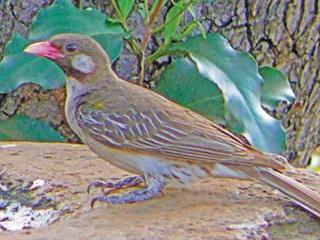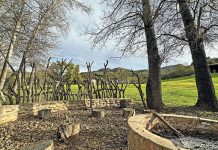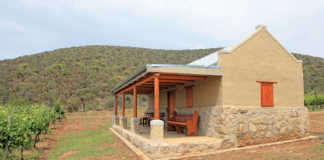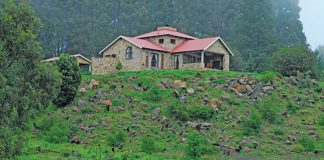
A green female little bee-eater stirred in the darkness. She shuffled around, because one of the four eggs in her nest seemed to have moved by itself. Although the sun shone brightly outside, it was as dark as a moonless night inside her metre-deep nesting burrow, dug into the roof of an aardvark burrow in Zambia. The egg was hatching, but unable to see it, the bee-eater mother pushed it deeper under the warm brood patch beneath her breast.
Exposed by science
British scientist Claire Spottiswoode recently inserted a tiny infrared camera into the burrow to observe nesting behaviour. What her camera lens revealed was startling. Through the small hole in the shell of the hatching egg protruded the evil looking double-hooked bill of a ruthless killer. It turned out that the egg belonged to a different species, a brood parasite. Unaware of the deception, the unsuspecting bee-eater parents were incubating it.
Something similar happens in nests into which cuckoo species lay their eggs. Apart from begging for food, the cuckoo chick is born with only one other instinct – to murder its nestmates. Soon after hatching, the chick will push all other chicks or unhatched eggs out of the nest to die on the ground below. In some species, a concave back ensures that the eggs, which are shoved overboard backwards, do not slip away sideways.
The intention is clear – to monopolise for itself the undivided attention of its foster parents, and all the food they bring to the nest. The hatching chick in the bee-eater’s nest was not a cuckoo, but the offspring of a real Jekyll and Hyde character – the greater honeyguide (Indicator indicator).
These birds are best known for their symbiotic interaction with humans and honey badgers. Attracting attention by chattering loudly, then flying with an exaggerated undulating flight to a perch some 40m away, they are said to lead honey seekers straight to the nest of a bee colony.
There they feast on scraps of honeycomb wax, bees and grubs left behind after the nest has been raided. Unable to walk and moving around on a quad bike, which easily scares them, I have never been able to successfully follow these seemingly ‘friendly’ birds. The reality is that they are sweet in name but not in nature.
A demanding foster child
Inside the inaccessible host nest burrow hides a dark secret of savage and murderous behaviour, the full extent of which no one had ever witnessed before Spottiswoode and her colleagues. She became the first person to record in graphic detail the gruesome events.
The mother of our honeyguide chick delays her egg laying by starting the incubation process inside her own body. She advances the cause of her chick further by puncturing some of the host’s eggs ensuring that her egg hatches first, by two to four days. In this way the honeyguide chick has a head start over its nestmates.
The honeyguide’s distinctive rapid begging call, sounding remarkably like a whole brood of very hungry bee-eater chicks, stimulates the foster-parents to bring in food at an ever-increasing rate. Even before the three bee-eater chicks start to hatch in their underground nest, they are doomed never to see the African sky. The fourth chick in the darkness with them, a powerful little honeyguide, will see to that.
Having hatched a few days before them, it now weighs almost six times more than they do. With a well-developed, vicious, hooked bill, it has been lying in wait for its foster siblings. As each emerges, the honeyguide attacks it. Completely blind and literally stabbing around in the dark, its brutality makes up for its poor aim. Within minutes of hatching, the bee-eater chicks are dead.
Although many will pity the bee-eaters, we must realise that apart from the fact that no life in nature is possible without death, these two species have co-existed for millennia. The bee-eater is only one of 21 species identified as hosts of the greater honeyguide.
Animals interact in many fascinating ways. Recently my amateur naturalist friend, Danie Terblanche, discovered another.
A pair of Cape robins regularly nests in his garden in Pretoria and the nest is often parasitised by a didric cuckoo. Like most cuckoos, it feeds heavily on the hairy and spiny caterpillars of certain moths and butterflies that are highly unpalatable and even toxic to other wildlife.
The Cape robin most certainly doesn’t feed on them, but remarkably Danie observed that when they have a didric cuckoo chick to rear, they collect large numbers of spiny caterpillars from a wild peach tree (Kiggelaria africana) nearby. I later identified the larvae as that of the very unpalatable brown acraea butterfly (Acraea horta) that ingests toxins from its food plants. The robins did not eat them, but fed them to their foster didric chick!
Contact Abré J Steyn on 083 235 4822 or at [email protected].













